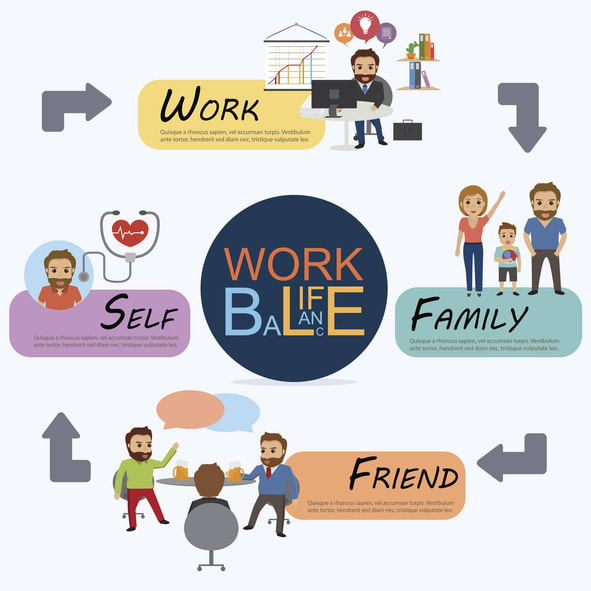Are you familiar with the term “quiet quitting”? It’s a growing trend in today’s work culture, where employees disengage from their jobs and only do the bare minimum. This phenomenon can be attributed to work-life imbalance and dissatisfaction in the workplace. In this blog post, we’ll explore the concept of quiet quitting, its origins, reasons, and impact on employees’ careers. We’ll also discuss strategies for “how to avoid quiet quitting”, maintaining work-life balance, and creating a supportive work environment from an employer’s perspective.
Key takeaways
- Understanding quiet quitting involves recognizing underlying causes and taking proactive steps to mitigate consequences.
- Strategies for quietly quitting a job include setting boundaries, prioritizing tasks, and communicating effectively.
- Employers should foster supportive work environments by actively listening to employees and resolving workplace issues.
Understanding quiet quitting

Quiet quitting, where employees lose interest in their work and only perform the bare minimum, typically stems from dissatisfaction and an imbalance between professional and personal lives. Employees may resort to this due to a lack of purpose or direction in their work. However, there are several strategies to mitigate this, including:
- Setting clear expectations
- Managing workload
- Expressing needs assertively
- Using time management tools
- Practicing self-care
- Seeking help when needed
The repercussions of quiet resignation can significantly impact an individual’s career progression, colleagues, and employer, making it necessary to address this trend.
The origins of quiet quitting
The global workforce’s increasing disengagement and burnout have had a direct impact on the rise of quiet quitting. This phenomenon has arisen as employees opt to discreetly disengage from their current positions due to factors such as inadequate manager support, employee burnout, personal mental health issues, and increased workloads. Quiet quitting can take the form of a lack of enthusiasm, reduced responsiveness, or neglect of customer needs. It is a reaction to the detrimental cycle of exhaustion, disengagement, and burnout that employees encounter.
Reasons behind quiet quitting
Potential causes for a quiet resignation could include:
- Excessive workload
- Lack of recognition
- Inadequate management
- Inadequate work-life balance
These factors may lead to chronic underperformers in the workplace. An excessive workload can lead to burnout and frustration, resulting in employees disengaging and completing only the necessary tasks. Dismissing quiet quitting as a non-issue can have negative consequences.
It is possible that employees may become quiet quitters due to a lack of recognition, thus feeling undervalued and unappreciated for their work, especially during a busy season when workloads are high. Equally, suboptimal management and a lack of work-life balance could be potential causes of quiet quitting. As we examine the strategies for quiet resignation further, understanding and effectively addressing these root causes is key.
Strategies to avoid quiet quitting

To ensure a smooth transition out of a role while maintaining a healthy work-life balance, employees can employ strategies such as setting boundaries, prioritizing tasks, and effectively communicating. Rather than quietly quitting a job, experts suggest communicating one’s job satisfaction and asking for a change.
This segment offers a detailed analysis of these strategies, aiming to guide employees in navigating the quiet quitting process.
Setting boundaries
Establishing boundaries in the workplace can increase productivity, prioritize tasks, protect employee well-being, reduce time spent on reactive tasks, and foster a healthy balance between connection and separateness. To ensure their professional relationships are not compromised, employees can review their job descriptions, identify their priorities, express their boundaries clearly, engage in active listening, and maintain professionalism and self-respect.
Quiet quitting refers to a means for employees to prioritize their well-being and establish limits on their workload and availability. This involves declining additional projects, avoiding taking on excessive work, and refraining from sacrificing personal time for work-related tasks. By employing quiet quitting, individuals can maintain a healthy work-life balance and prevent burnout. To combat quiet quitting, employers should focus on promoting a healthy work-life balance and addressing employee concerns.
Prioritizing tasks
Task prioritization in the process of quiet quitting can be advantageous, as it allows individuals to prioritize tasks that align with their long-term goals. This can help to effectively manage time and energy, reduce stress and overwhelm, and promote a sense of control and accomplishment. Various tools and methods employed for task prioritization include:
- Priority matrix
- Relative prioritization
- Task lists
- Calendar tools
- Communication
- RICE framework
- Pareto analysis
- Agile prioritization techniques
Kumospace recommends setting goals and prioritizing tasks when planning to exit quietly, keeping in mind the company mission. By focusing on essential duties, employees can ensure they meet their basic job requirements while transitioning out of their current roles.
Communicating effectively
Effective communication is essential in the process of quiet quitting, as it facilitates the navigation of the process while fostering professional relationships. Here are some strategies that are effective for fostering effective communication in the workplace:
- Constructing a corporate communication plan
- Encouraging one-on-one conversations
- Emphasizing two-way communication
- Utilizing technology to facilitate communication
- Cultivating an open environment
- Utilizing effective communication tools
- Meeting with employees in person
- Providing clear instructions
- Utilizing visuals
- Considering the audience
- Engaging individuals
Communication can facilitate the process of discreet resignation by:
- Articulating one’s needs and worries
- Establishing a transparent and truthful communication channel
- Stimulating recurrent communication
- Resolving ambiguous communication
- Cultivating a people-centric culture
- Enhancing management practices.
While quietly quitting, having open discussions with your manager about your boundaries and priorities is key. Clearly defining your working hours and breaks, demonstrating your boundaries, prioritizing mental and emotional wellbeing, along with being empathetic and understanding should be part of this process.
How to maintain work-life balance and avoid quiet quitting

Maintaining a balance between work and personal life while quietly quitting is a crucial part of the process. This segment discusses time management techniques, self-care practices, and seeking external support that could help employees preserve their well-being and equilibrium during this transition.
Time management techniques
Setting goals, establishing boundaries, and creating a balanced work-life balance are effective techniques for managing time in order to sustain a work-life balance. Some common challenges in time management when planning to depart from a job include procrastination, lack of prioritization, distractions, stress and lack of energy, and inadequate estimation of time. To address these issues, it is recommended to set specific deadlines, prioritize tasks, minimize distractions, practice stress management techniques, and enhance time estimation skills.
Various tools and methods employed for time management include:
Utilizing these tools can assist employees by providing a structured approach to managing time, helping to prioritize tasks and projects, and keeping them organized. Moreover, these tools can help employees remain focused and motivated.
Self-care practices
Employees struggling with being over-worked should consider:
- Packing a nutritious lunch
- Taking breaks outside
- Drinking more water
- Setting goals
- Getting enough sleep
- Practicing mindfulness and meditation
- Going for walks
- Learning how to say “no”
- Making ergonomics a priority
- Reflecting on the impact of self-care on overall health
Exercise can assist in managing stress during the cessation of employment by decreasing stress hormones and stimulating the production of endorphins, which promote relaxation.
Various meditation techniques can be beneficial in departing from a job quietly, such as post-work meditation and mindfulness meditation. Engaging in hobbies can help reduce stress and provide an avenue for relaxation and rejuvenation after a long day, assisting in managing work-life balance and preventing burnout.
No specific frequency is outlined for self-care activities during this process; however, it is essential for employees to prioritize their personal well-being and take regular breaks to manage stress and promote a healthy work-life balance.
Seeking support
Seeking support from friends, family, or professional networks can provide guidance and encouragement during your journey. Friends and family can be of assistance during this process by:
- Providing a listening ear
- Offering encouragement
- Providing practical help
- Being understanding and non-judgmental
- Presenting alternative perspectives
- Being a source of motivation
When seeking support from colleagues without revealing your potential intention to quit, you can:
- Identify methods to increase your visibility and reduce your reliance on uncertain colleagues
- Request assistance in an appropriate way
- Supply information on two levels when uncertain
- Express your desire for greater assurance from your colleagues and supervisors
- Validate your expertise to establish limits in your role
Online platforms such as Indeed, alternative networking sites, and online learning platforms such as Udemy and Coursera are recommended for job seeking and networking while maintaining confidentiality.
The impact of quiet quitting on your career

Quiet quitting can carry both positive and negative consequences for an employee’s career. This section weighs the pros and cons of quiet quitting, emphasizing the importance of considering its potential impacts on one’s career.
We will also explore how to prepare for future opportunities while quietly quitting.
Pros and cons of quiet quitting
The potential advantages of a discreet resignation include:
- Strategically distancing oneself from burnout
- Increased time for personal interests
- Improved work-life balance
- Preserving autonomy in career decisions
- Circumventing potential conflicts or adverse consequences
Quiet quitting can be beneficial for mental health by enabling individuals to prioritize their well-being and establish healthy boundaries in the workplace.
On the other hand, detrimental implications of quiet quitting include impeded career development, potential harm to professional connections, and difficulty in obtaining a new job. Weighing the possible positive and negative impacts on one’s career, as well as the potential risks and rewards, is highly recommended before deciding to quietly quit.
Preparing for future opportunities
Preparing for potential future opportunities is essential to ensure that you are able to capitalize on any available prospects. This includes keeping your resume up-to-date, building professional relationships, and staying informed of possible job openings. When updating a resume while quietly quitting, it’s important to be direct, clearly communicate expectations and boundaries, maintain a positive attitude, and foster work relationships.
Alternative networking sites and online learning platforms such as Udemy and Coursera are recommended for job seeking and networking while maintaining confidentiality. Staying proactive in your career development will help you transition smoothly from your current position and seize new opportunities as they arise.
Employers' perspective on quiet quitting

From the viewpoint of employers, addressing quiet quitting and fostering a supportive work environment that promotes work-life balance, recognition, and open communication is important. Recognizing the indicators of quiet quitting and proactively addressing employee dissatisfaction can help avert and lessen the impact of quiet quitting in the workplace.
Identifying signs of quiet quitting
A decrease in productivity and a lack of engagement are indicators of quiet quitting. Identifying these signs can help employers address the issue before it escalates and affects the overall workplace environment. Diminished productivity associated with quiet quitting may include:
- Reduced productivity
- Missed deadlines
- Lack of initiative
- Decreased engagement
- Increased errors
Signs of disengagement in an employee that is quietly quitting may include:
- Decreased involvement and excitement
- Elevated absenteeism
- Decreased efficiency
- Reduced contribution
- Detachment from colleagues
- Skepticism
- Pessimism
- Reluctance to work extra hours
Keeping a close eye on these indicators can help employers take appropriate action to address quiet quitting and support employee wellbeing.
Creating a supportive work environment
Fostering a workplace environment that promotes work-life balance, recognition, and open dialogue can help employers prevent and manage quiet quitting among their employees. This involves:
- Nurturing a culture of open communication
- Actively listening to employees
- Resolving any workplace issues that might lead to dissatisfaction and disengagement.
Cultivating relationships between management and personnel is imperative in avoiding quiet quitting, as employees are more likely to become quiet quitters when there is a disconnect. Establishing a rapport with team members, providing and requesting feedback consistently, and telling employees that their input is valued can help create an environment where employees feel supported, reducing the likelihood of quiet quitting.
Combating quiet quitting: Kumospace's role in creating engaging work environments
Kumospace addresses the phenomenon of "quiet quitting" - where employees mentally check out of their jobs - by fostering a more engaging and connected workplace. Its innovative virtual environment promotes active participation and fosters a sense of belonging, crucial for employee engagement and satisfaction. The spatial audio and video features create a more natural and collaborative atmosphere, encouraging open communication and team bonding. This interactive setup allows managers to more effectively recognize and address signs of disengagement early on. By facilitating regular, informal interactions among team members, Kumospace helps maintain a strong team spirit and a sense of community, even in remote settings. These features collectively work to keep employees mentally and emotionally invested in their roles, reducing the risk of quiet quitting by making the virtual workplace a more inviting and inclusive space.
Summary
Throughout this blog post, we have explored the concept of quiet quitting, its origins, reasons, and impact on employees’ careers. We’ve discussed strategies for avoiding quietly quitting, how to maintain work-life balance, and how employers can address the issue by creating a supportive work environment.
In conclusion, quiet quitting is a growing trend that emphasizes the need for a balanced and supportive work culture. By understanding the underlying reasons for quiet quitting and implementing effective strategies, both employees and employers can work together to create a more fulfilling and productive workplace environment.
Frequently asked questions
Quiet quitting is generally not an advisable approach. It can be deemed disrespectful to employers and can be detrimental to employees in the long run.
Give at least two weeks' notice, write a formal letter of resignation, and leave on a positive note by showing appreciation and feedback. Don't criticize or gossip while you're resigning.
Quiet quitters are employees put in only the minimum effort required for their job, such as not speaking up in meetings, not volunteering for tasks, and refusing to work overtime. This may lead to reduced performance or greater absenteeism. According to a Gallup survey in 2022, half of the U.S. workforce may consist of quiet quitters.
Employees can maintain work-life balance while avoiding quietly quitting by setting boundaries, prioritizing tasks, and effectively communicating.
Decreased productivity, missed deadlines, lack of initiative, decreased engagement, and increased errors are all signs that an employee may be quietly quitting.





